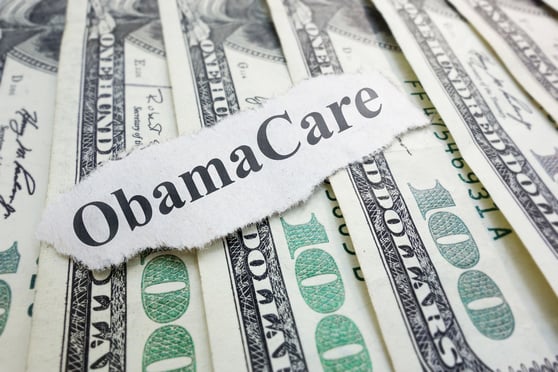The chronic wage stagnation that has hamstrung much of theAmerican workforce could reverse under a Trump administration,according to some economists.
|That would mean very different things for employers and theirworkers.
|It's important for benefits brokers to be aware of the basicmacroeconomic implications on how employers design benefitsprograms, the amount of cash employees will have to spend on majormedical and voluntary offerings and the value of existingretirement workplace benefits.
|Here is the argument.
|As of October 2016, the country's unemployment rate stood at 4.9 percent,according to the Bureau of Labor Statistics.
|That's not an insignificant number; for perspective, recall that 10 percent of the American population wasunemployed in October 2009, at the peak of the financialcrisis. As recently as January 2013, the unemployment ratewas nearly 8 percent.
|While the improvement has been a welcomed one, it hasn't donemuch for workers' take-home pay. In the years leading up to thefinancial crisis, wage inflation steadily slowed. Then, immediatelypost-crisis, wage growth took a nosedive, slowly improving since,as shown by BLS data.
|Nonetheless, wage inflation today remains considerably lowerthan in 2006, when private sector wages increased at twice the rateas today.
|Some economists predict that all could change under a PresidentDonald Trump.
|As it stands, the country is, by some measures, at fullemployment. Yet throughout his campaign, Trump laid out anambitious agenda, featuring a pledge to repeal and replace theAffordable Care Act. And some of Trump's other promises – such ascorporate and individual tax code reform and big investments inAmerican infrastructure – could attract greater bipartisansupport in Congress.
|If delivered, those initiatives could drive economic inflation,and – more specifically, ignite wage inflation.
|“We're already beginning to see wage increases,” said AnthonyBrown, a partner with Mercer Investments.
|“One hope is that corporate tax reform could release some animalspirits and get companies investing again,” said Brown, whorecently participated in a Mercer webinar on how they electionmight affect employers and the workforce.
|Throughout the past eight years, employer revenues have largelyfrom low wage growth. By making fewer investments in its laborforces, large corporations and smaller businesses alike are able topad their profits at the same time that overall economic growthfalls below historical rates.
|But if corporations and individual business owners pay lowertaxes — a key priority of the Trump administration — andinfrastructure investment encourages overall economic growth thewage pendulum may swing back toward workers, predicted Brown.
|“If we get significant tax cuts and infrastructure spending, thetrend we are already seeing in wage growth will likely continue,”he said.
|Higher incomes pave way for greatervoluntary consumption
|The political and economic landscape is riddled with wild cards,meaning there's no guarantee that workers' wages will improve. Butwe can make some reasonable assumptions under such a scenario.
|First, it would become more costly to run a business. Anyeconomic growth may ultimately offset those costs, but the prospectof a more expensive workforce will likely encourage more employersto offer consumer-driven health plans along with a suite ofvoluntary options, which may help lower employer premiums on majormedical health care.
|Second, wage inflation could extend to health care providers,which would lead to more costly health care and, ultimately, driveup the price of workplace premiums.
|Finally, more take-home pay may mean more benefits options. Buteven as group voluntary products enjoy competitive price points,today's voluntary consumer suffers from “wallet fatigue” as theyare exposed to a wider array of voluntary options, said Patrick Toner, CEO of Customer BenefitAnalytics.
|Another consideration in a “rising wages” scenario: Workers'401(k) accounts may not necessarily reflect any economic gains.
|Beyond higher labor costs, rising interest rates – which theFederal Reserve uses to keep inflation in check – could slowcorporate profits. That would eventually strengthen the dollar,explains Brown, meaning slower revenue growth for Americanexports.
|“Wage inflation will push corporate profits lower, and risinginterest rates will also put downward pressure on equityvaluations,” said Brown. Even if the economy grows, he said,equities and 401(k)s may not benefit immediately.
|And if that bears out, workers would be even further discouragedfrom taking 401(k) hardship loans. While such loans are relativelyuncommon, they can denigrate workers' retirement savings and exposethem to a costly tax bill if not repaid on time. And they'reprimarily driven by the consumers' needs to cover out-of-pocketmedical costs.
|ACA: Here to stay for at least sometime
|Notwithstanding Trump's campaign rhetoric, it won't be easy torepeal the ACA, and it will almost certainly not happen as quicklyas the President-elect promised on the stump.
|The GOP's slim Senate majority means it doesn't have enoughvotes to survive any Democrat filibuster of an ACA repeal.
|Some provisions have drawn criticism from both sides of theaisle. But it will be difficult for Republicans to repeal suchcontroversial items as the Cadillac Tax – which was designed as akey funding mechanism for lower-income Americans enrolled inexchanges and in Medicaid expansion – withoutpresenting a fully functional replacement.
|Health care economist Gail Wilensky writes in the Journal of theAmerican Medical Association that Republicans in both chambers of Congress have said theywon't repeal the ACA without an alternative in place to coverthe 20 million Americans newly insured under the law.
|“The basic interest of congressional members in politicalsurvival suggests this as well,” writes Wilensky.
Complete your profile to continue reading and get FREE access to BenefitsPRO, part of your ALM digital membership.
Your access to unlimited BenefitsPRO content isn’t changing.
Once you are an ALM digital member, you’ll receive:
- Critical BenefitsPRO information including cutting edge post-reform success strategies, access to educational webcasts and videos, resources from industry leaders, and informative Newsletters.
- Exclusive discounts on ALM, BenefitsPRO magazine and BenefitsPRO.com events
- Access to other award-winning ALM websites including ThinkAdvisor.com and Law.com
Already have an account? Sign In
© 2024 ALM Global, LLC, All Rights Reserved. Request academic re-use from www.copyright.com. All other uses, submit a request to [email protected]. For more information visit Asset & Logo Licensing.








